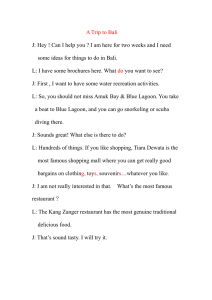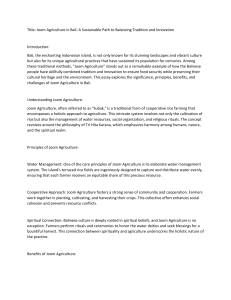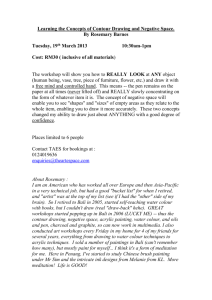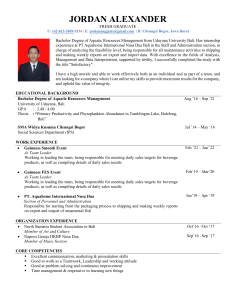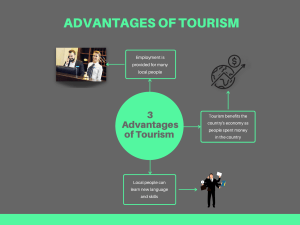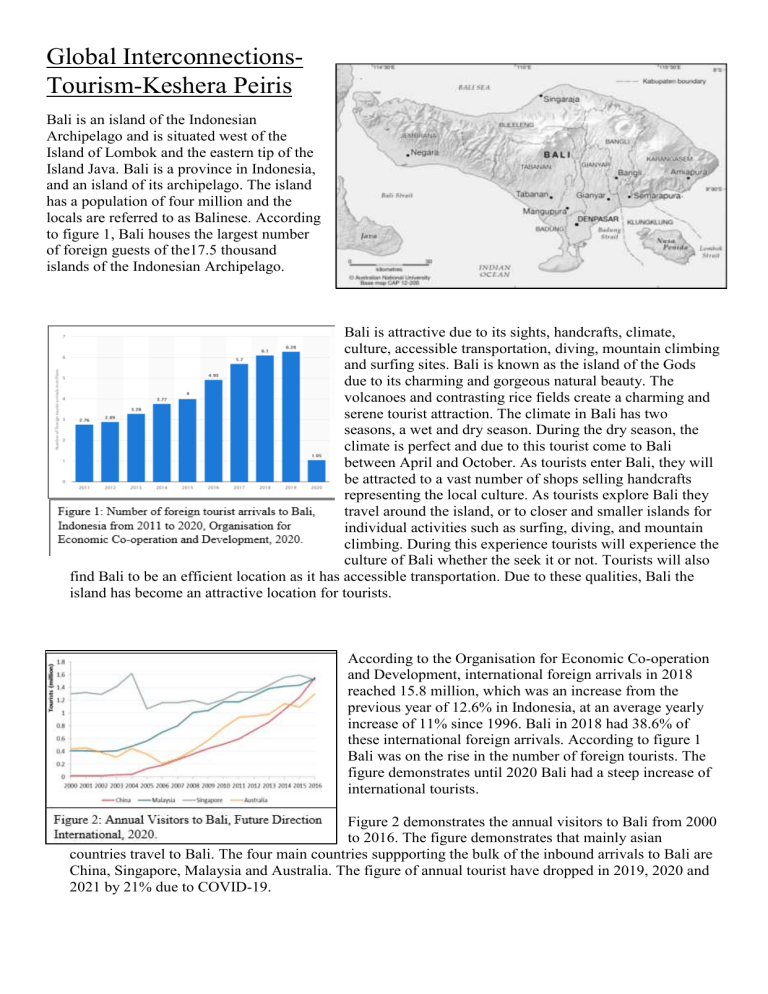
Global InterconnectionsTourism-Keshera Peiris Bali is an island of the Indonesian Archipelago and is situated west of the Island of Lombok and the eastern tip of the Island Java. Bali is a province in Indonesia, and an island of its archipelago. The island has a population of four million and the locals are referred to as Balinese. According to figure 1, Bali houses the largest number of foreign guests of the17.5 thousand islands of the Indonesian Archipelago. Bali is attractive due to its sights, handcrafts, climate, culture, accessible transportation, diving, mountain climbing and surfing sites. Bali is known as the island of the Gods due to its charming and gorgeous natural beauty. The volcanoes and contrasting rice fields create a charming and serene tourist attraction. The climate in Bali has two seasons, a wet and dry season. During the dry season, the climate is perfect and due to this tourist come to Bali between April and October. As tourists enter Bali, they will be attracted to a vast number of shops selling handcrafts representing the local culture. As tourists explore Bali they travel around the island, or to closer and smaller islands for individual activities such as surfing, diving, and mountain climbing. During this experience tourists will experience the culture of Bali whether the seek it or not. Tourists will also find Bali to be an efficient location as it has accessible transportation. Due to these qualities, Bali the island has become an attractive location for tourists. According to the Organisation for Economic Co-operation and Development, international foreign arrivals in 2018 reached 15.8 million, which was an increase from the previous year of 12.6% in Indonesia, at an average yearly increase of 11% since 1996. Bali in 2018 had 38.6% of these international foreign arrivals. According to figure 1 Bali was on the rise in the number of foreign tourists. The figure demonstrates until 2020 Bali had a steep increase of international tourists. Figure 2 demonstrates the annual visitors to Bali from 2000 to 2016. The figure demonstrates that mainly asian countries travel to Bali. The four main countries suppporting the bulk of the inbound arrivals to Bali are China, Singapore, Malaysia and Australia. The figure of annual tourist have dropped in 2019, 2020 and 2021 by 21% due to COVID-19. Positive impacts of tourism Tourism in Bali has been a key sector in Bali since the 1970’s. According to “A Case study of Bali as a Tourist destination”, 2015, Bali has been enabled to rise in domestic economics such as housing, general real estate and employment. This also caused the presentation of the Balinese culture to tourists causing regional development in Bali. This is due to the economic empowerment of Bali due to tourism. For example, according to figure 3, one third of the Balinese employment sector is comprised of tourism. This astronomical figure demonstrates the significance of tourism in Bali. These jobs permit the once underdeveloped economics of Bali to become more independent resulting in more profit for the Balinese people. Another example of a positive impacts of tourism in Bali is the cultural exchange in Bali. This permits foreigners to experience the Balinese culture and for the Balinese to cement their culture forever in the world due to tourism. Negative impacts of tourism In Bali tourism has affected environmental and social aspects of the location negatively. According to the Indonesian ministry of Tourism, they present in figure 4, an increase in tourism starting at 1983 as it began to rise and eventually become one of their largest economic sectors. Bali is a province in a third world country. As a result of these two factors tourism has enabled for a huge surplus of uncontrolled capital to flourish in an unprepared and undeveloped location, resulting in negative impacts. Negative impacts are such as the deterioration of societal and cultural values and loss of productive land in Bali. This is caused due to abundant amount of capital coming from tourist. Due to this the society of Bali has been developing in money-based mentality. This enabled for illegal acts such as prostitution to occur. This has also caused the destruction of Balinese culture, as the overbearing value of money is decreasing the importance of culture in the Balinese society. Causing the deterioration of social and cultural value in Bali due to tourism. Furthermore, due to the evident capital returns in Bali in the tourism sector, land conversion of productive land such as rice fields, plantations, and coastal regions has occurred for economic gain. This has caused environmental damage. Impact of Covid-19 on tourism In Bali COVID-19 has plagued the province. The hospitals are in extremely high demand and all domestic air travel requires evidence of at least the first dose of COVID-19 vaccine. To enter Indonesia, you must show evidence of full COVID-19 vaccination. These vaccination requirements also apply to children between the ages of 12-17. Travellers with a medical certificate confirming they are not fit to be vaccinated are exempt. Negative COVID-19 PCR tests are required for both domestic and international travel. Mandatory hotel quarantine of 8 days is required for international arrivals (Smart Travil Organisation Australian Government, 2021). Due to these regulations Bali is facing a sudden economic devastation as one of their biggest economic sectors, tourism, has become non-existent. It has also caused the Indonesian ministry of Tourism to re-evaluate how tourism can become sustainable and more productive in Indonesia and especially in Bali. According to figure 5 created by the World Tourism Organisation, only 58.2% of the Balinese people have retained their job. 20.9% have temporarily lost their job and 3.02% have completely lost their job and income. Also due to the tourism sector reducing by 12% the majority of jobs in tourism are not sustainable. Due to this 7, 000 jobs have been lost in tourist guides alone. Due to COVID Bali has seen an unprecedented loss in its economic sector and a positive change in its social sector. Due to tourism encompassing 30% of the tourism sector and becoming a significant percentage of Balis GDRP (figure 4 and 3) it being almost non-existent due to COVID-19. This has caused the Balinese people lose jobs, income, development, and sustainability in their lives. In the most extreme living standards in Bali, they have needed to rely on donations to survive. Socially COVID has allowed for tourism in Bali to be re-evaluated to deter extreme negative impacts of tourism on Bali. The World Tourism Organisation and The Indonesian ministry of Tourism has joined together to plan for after COVID. For example, the Indonesian Ministry has provided jobs to clean the streets and coastlines of Bali planning to decrease the landfill in Bali. To conclude tourism in Bali has brought more negative impacts on the location. Tourism in Bali is not practiced sustainably or ethically due to the impact of capital in an unprepared location. These impacts could shift Bali from being famed for its beauty into a devastated and scarred province of Indonesia. However due to COVID-19 these negative impacts have halted, and the province is beginning to plan and prepare to sustainably accept tourist whilst mitigating the negative impacts on Bali. The aim of the Indonesian government is to heal and develop Bali using COVID as a planning and preparation stage. Bibliography 1. 2021. [online] Available at: <https://www.smartraveller.gov.au/destinations/asia/indonesia> [Accessed 14 August 2021]. 2. Core.ac.uk. 2015. Role of Desa Adat in Tourism Development in Bali (Case Study of Bali as Tourist Destination). [online] Available at: <https://core.ac.uk/reader/234646880> [Accessed 15 August 2021]. 3. Future Directions International. 2020. The Indonesian Tourism Industry: A Bright Future and Opportunities for Australia - Future Directions International. [online] Available at: <https://www.futuredirections.org.au/publication/indonesian-tourism-industry-bright-futureopportunities-australia/> [Accessed 16 August 2021]. 4. Oecd-ilibrary.org. 2020. Indonesia | OECD Tourism Trends and Policies 2020 | OECD Library. [online] Available at: <https://www.oecd-ilibrary.org/sites/6c4fc1cden/index.html?itemId=/content/component/6c4fc1cd-en> [Accessed 15 August 2021]. 5. Unwto.org. 2021. UNWTO Works With Government of Indonesia To Restart Tourism in Bali. [online] Available at: <https://www.unwto.org/news/unwto-works-with-government-of-indonesia-torestart-tourism-in-bali> [Accessed 18 August 2021]. 6. Vuir.vu.edu.au. 2021. Green Growth-Bali Tourism. [online] Available at: <https://vuir.vu.edu.au/35965/12/Green_Growth_2050_RoadMap_Bali.pdf> [Accessed 17 August 2021]. 7. Wikitravel.org. 2021. Bali. [online] Available at: <https://wikitravel.org/en/Bali> [Accessed 15 August 2021]. Image 1: Bali 1970 and Bali 2020 the difference, Indonesian Ministry of Tourism, 2020. Figure 4: Percentage of GDP of Bali 1983-2010, Indonesian Ministry of Tourism, 2011. Figure 0: The 10 most prominent tourism destination in Indonesia, Future Directions International, 2020.
